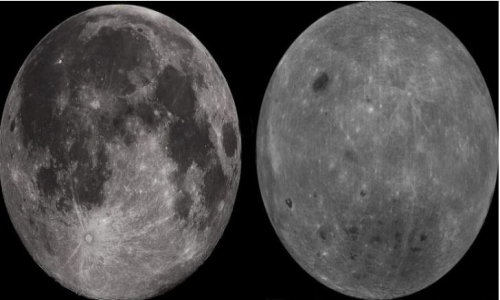


 10:57:46
10:57:46  2024-01-16
2024-01-16  903
903

Only 20 to 30 'tree lobsters' remain in the wild. This single fragile population was rediscovered in 2001 after the insects were presumed extinct for 80 years.
These wild Lord Howe Island stick insects (Dryococelus australis) currently cling to their precarious existence on a near-vertical volcanic outcrop called Ball's Pyramid.
Now, San Diego Zoo is inviting visitors to see the extraordinary, extinction-defying Australian animals in person.
Prone to catastrophic weather events and landslides, Ball's Pyramid is not exactly a safe place for a critically endangered species.
Here there's only one species of food plant, Melaleuca howeana, for the herbivorous stick insects to graze. These shrubs are being strangled by an invasive vine, which can't be entirely removed as they're holding soil onto the cliffs with their roots.
So several zoos around the world have been working to bring these large, flightless phasmids down from their metaphorical and quite literal cliff edge.
"Bringing our guests close to this rare and iconic species is a great way to raise awareness for the lesser-known animals that run the world," San Diego Zoo entomologist Paige Howorth explains.
"In so many ways – pollination, decomposition, predation, and simply as food for other animals – invertebrates make life possible for us all."
Lord Howe Island stick insects once clustered on branches of Moreton Bay figs (Ficus macrophulla) and wooly tea trees (Leptospermum lanigerum) of their namesake island home, off the east coast of Australia.
But the chunky, hand-sized stick insect proved the perfect meal for the rat invasion of 1918. The shipwrecked rats feasted and multiplied and feasted some more, until not a single 'tree lobster' could be found.
The rats also devoured further native species until they no longer existed on the island, including five birds, two plants, and 12 other invertebrates.
After no sightings since 1920, the Lord Howe stick insect was declared extinct in 1986. But rumors of insect poop and skin sheds from climbers in the 1960s betrayed the insects' secret refuge on a volcanic sea stack 23 kilometers away from the island.
The animation Sticky, by Jilli Rose portrays the animal's incredible saga, including a first hand narration of their rediscovery on Ball's Pyramid.
This incredible feat of survival, despite critically low numbers in such a desolate place, is likely due to the female's ability to clone themselves through parthenogenetic reproduction.
Researchers were hesitant to put the remaining population at further risk by removing individuals, but in 2003, a rescue team safely extracted four of the black stick insects to begin a breeding program.
Together, Melbourne, Bristol (now closed), and San Diego Zoos have established a captive population, now numbering in the thousands.
Since 2019, there has been a massive effort to eliminate the rats on Lord Howe Island with the help of rat-detecting dogs. From endangerd land snails to the flightless Lord Howe Woodhen, an incredible resurgence of the island's unique wildlife has followed.
"What is unfolding is an ecological renaissance," Lord Howe Island resident Hank Bower told Laura Chung at The Sydney Morning Herald in 2022.
"There's a vine which we didn't know what the fruit looked like, people are taking photos of insects and sending them to the Australian Museum who are saying we've only got three of those on record ever but we are seeing hundreds of them. Everything is blooming, all the plants are flowering and we are seeing a carpet of seedlings."
The zoos hope their now-thriving populations will be used to reestablish the insects back on their island home once it's deemed safely rat-free.
"This species was once a major converter of vegetative matter and played an important function in the island's ecology as an ecosystem engineer, increasing the richness and speeding up the recycling of nutrients," says NSW state government ecologist Nicholas Carlile.
"They are currently a missing piece of the puzzle and it would be phenomenal to see them back in the forest someday."
Reality Of Islam |
|

Astronomers

Cosmologist

Scientists
 9:3:43
9:3:43
 2018-11-05
2018-11-05
10 benefits of Marriage in Islam
 7:5:22
7:5:22
 2019-04-08
2019-04-08
benefits of reciting surat yunus, hud &
 9:45:7
9:45:7
 2018-12-24
2018-12-24
advantages & disadvantages of divorce
 11:35:12
11:35:12
 2018-06-10
2018-06-10
 6:0:51
6:0:51
 2018-10-16
2018-10-16
 8:39:51
8:39:51
 2022-09-23
2022-09-23
 8:30:23
8:30:23
 2022-03-03
2022-03-03
 1:38:41
1:38:41
 2021-12-08
2021-12-08
 2:11:12
2:11:12
 2022-10-15
2022-10-15
 7:6:7
7:6:7
 2022-03-21
2022-03-21
 7:59:14
7:59:14
 2018-06-21
2018-06-21
 11:2:27
11:2:27
 2022-10-06
2022-10-06
 5:41:46
5:41:46
 2023-03-18
2023-03-18
| LATEST |